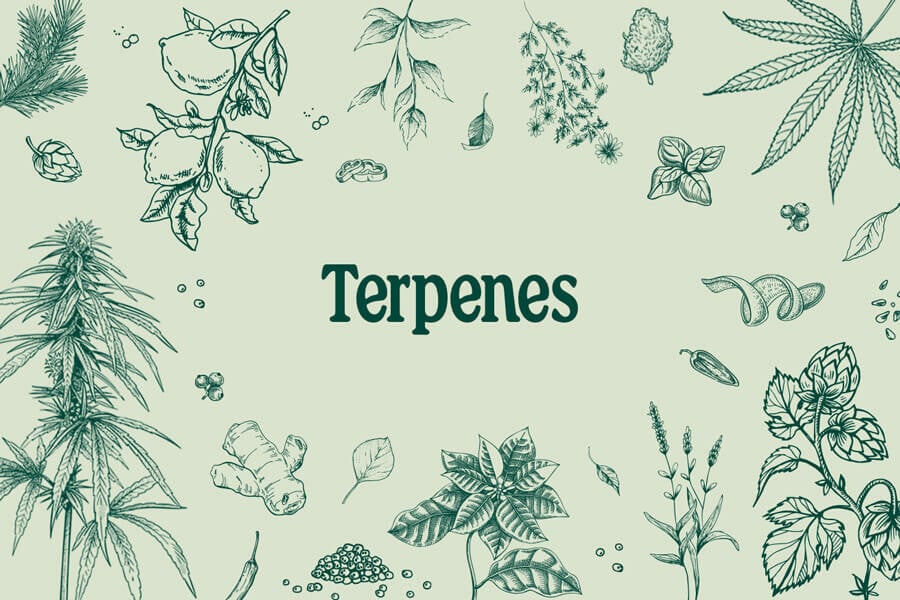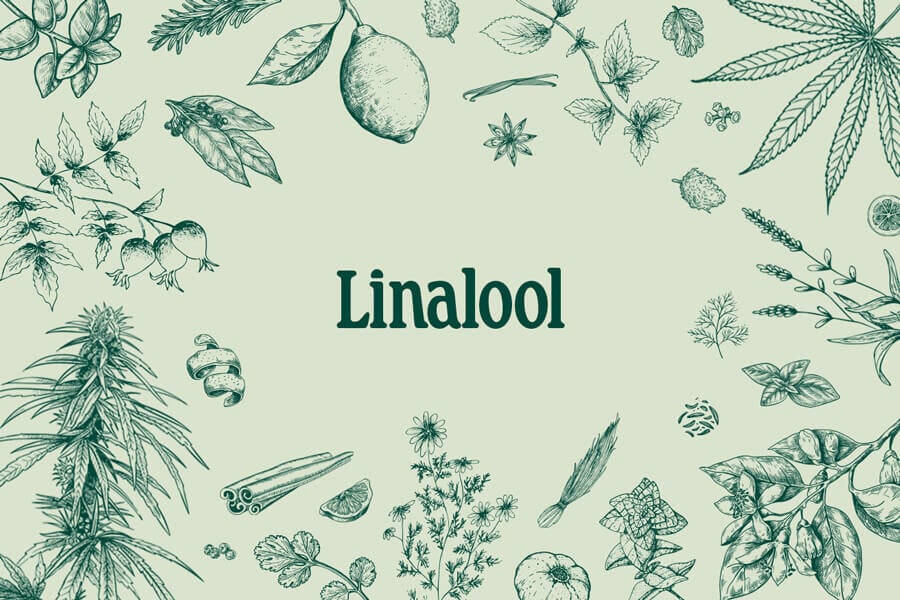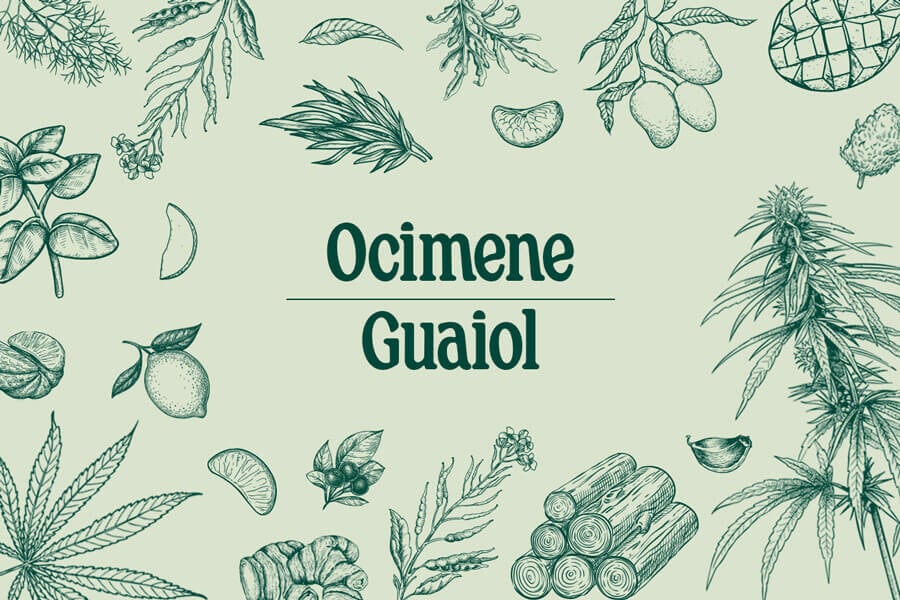.
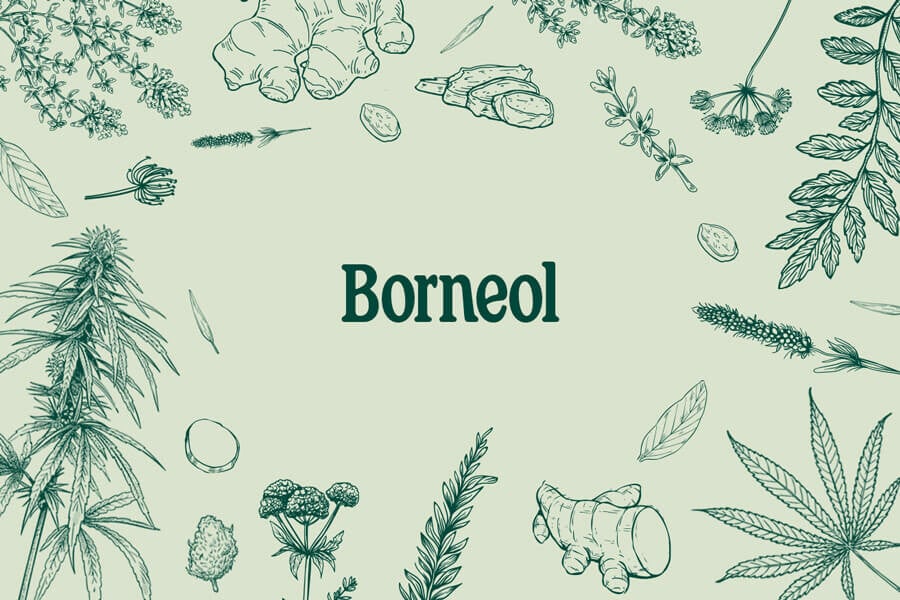
Borneol Terpene: Hated By Insects, Loved By Humans
Borneol is a fundamental part of traditional Chinese medicine, and is an ingredient in cosmetics, insect repellents, and essential oils. Science is now looking into the potential therapeutic efficacy of this monocyclic terpene, thanks to its anti-inflammatory, neuroprotective, antioxidant, anticoagulant, and anaesthetic properties.
Borneol is one of several terpenes that insects and parasites hate. The aroma given off is part of the cannabis plant’s natural defence against predators and pests. Humans, on the other hand, are usually quite attracted to these unique scents.
Borneol naturally occurs in ginger, rosemary, sage, camphor, marjoram, thyme, mugwort, and other plants. It’s a bicyclic monoterpene shaped as thin, opaque, whitish crystals with a minty, balsam aroma. Its oxidation generates the substance commonly known as camphor, which can itself be extracted from plants like camphor laurel and used as a source of borneol. Before diving deep into the recent research findings on borneol and its promising future, you might want to read this article for a quick overview on cannabis terpenes and their effects on the body.
FROM TRADITIONAL MEDICINE TO LAB RESEARCH
Asian cultures have known the possible applications of borneol for thousands of years, and the substance is fundamental in traditional Chinese medicine. Borneol is still used today to relieve certain kinds of pain, facilitate digestion, improve blood circulation, and even to help treat respiratory diseases. Its refreshing action is used for fever reduction and other cooling purposes. In Asia, this substance is also used as a preventative treatment for cardiovascular diseases. Borneol is a common ingredient in cosmetics, insect repellents, and essential oils. Science has recently started to confirm many of the ancient beliefs surrounding borneol’s therapeutic efficacy, thanks to its anti-inflammatory, neuroprotective, antioxidant, anticoagulant, and anaesthetic properties.
POTENTIAL MEDICINAL PROPERTIES
Borneol is one of the natural compounds most shown to reduce inflammation in gingivitis[1] lab models, while as a topical pain reliever[2], it exhibits advantages over menthol. As an anticoagulant[3], it displays a synergistic effect with edaravone in a rat model of ischemic stroke. Edaravone is a molecule used to help individuals recover from stroke and to treat amyotrophic lateral sclerosis. Another study from 2008 suggests the antithrombotic[4] effect of borneol, indicating a possible preventive action on blood clots and cardiovascular diseases, such as stroke.
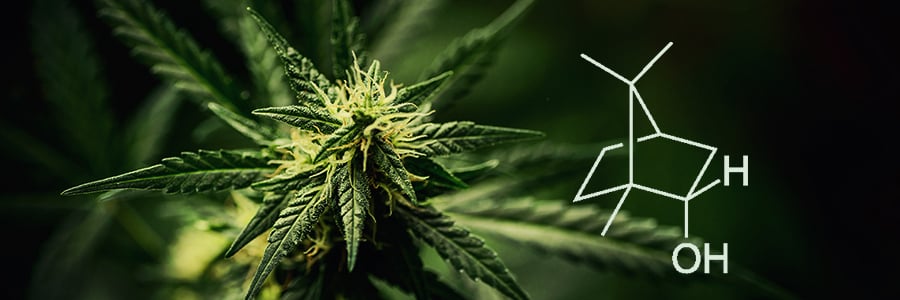
One study shows that borneol acts on rats as a central and peripheral antinociceptive[5], reducing induced pain and inflammation. Research on cell cultures indicates that borneol can affect the activity of neuronal nicotinic acetylcholine receptors (nAChRs), which are involved in the regulation of nerve-muscle communication and inflammatory processes. The inhibition of nAChRs-mediated chemical effects by borneol might result in a local anaesthetic effect[6].
Research is also starting to evaluate the neuroprotective and antioxidant[7] properties of this terpene. Cell degradation was inhibited by a borneol treatment that protected a SH-SY5Y cell line against induced toxicity, exerting an antioxidant effect and suppressing apoptosis. The SH-SY5Y cell line is used to study characteristics of human brain cells, and the results of this study increase knowledge on the neuroprotective mechanism of borneol, as well as its potential in the prevention and treatment of Alzheimer’s and other neurodegenerative diseases.
Finally, a study published in PLoS One shows borneol strongly increases apoptosis[8] in human liver carcinoma cells induced by the novel anticancer compound selenocysteine. As a result, this terpene could become a candidate as a chemosensitizer of selenocysteine in human cancer treatments. All these studies are conducted on cell lines or rats, and much more research is needed by conventional medicine before even thinking about clinical trials.
BORNEOL IN CANNABIS
Small amounts of borneol naturally contained in cannabis and other herbs are completely safe, while pure borneol can irritate the eyes, skin, and respiratory tract. Pure borneol is also harmful if swallowed. Studies show borneol increases the bioavailability of other active compounds and improves the transportation of substances toward brain cells. Borneol also plays into the synergistic phenomenon of the “entourage effect" along with other terpenes, cannabinoids, and more. This is where borneol’s effects in cannabis likely make themselves known.
However, borneol is not one of the primary cannabis terpenes, and it does not occur frequently in significant amounts. Some of borneol’s beneficial properties and flavours can also be found in other terpenes, yet it is good to know that OG Kush is one strain that might contain this terpene. This particular strain is not a traditional Kush variety because it has more sativa characteristics, and the flowers developed from this genetic line are known for their fresh lemon and pine scent. After picking and germinating the right seeds for your taste and needs, you might want to increase the amount of terpenes in your garden, right? Here are a few tips for maximising the terpene content of your cannabis plants.
- Identification of 1,8-cineole, Borneol, Camphor, and Thujone as Anti-Inflammatory Compounds in a Salvia Officinalis L. Infusion Using Human Gingival Fibroblasts - PubMed https://www.ncbi.nlm.nih.gov
- A Clinical and Mechanistic Study of Topical Borneol-Induced Analgesia - PubMed https://www.ncbi.nlm.nih.gov
- The synergetic effect of edaravone and borneol in the rat model of ischemic stroke - ScienceDirect https://www.sciencedirect.com
- The Antithrombotic Effect of Borneol Related to Its Anticoagulant Property - PubMed https://www.ncbi.nlm.nih.gov
- https://www.hindawi.com/journals/tswj/2013/808460/abs/
- Inhibition of Acetylcholine-Mediated Effects by Borneol - PubMed https://www.ncbi.nlm.nih.gov
- https://www.tandfonline.com/doi/abs/10.3109/13880209.2012.700718
- Natural Borneol, a Monoterpenoid Compound, Potentiates Selenocystine-Induced Apoptosis in Human Hepatocellular Carcinoma Cells by Enhancement of Cellular Uptake and Activation of ROS-Mediated DNA Damage https://www.ncbi.nlm.nih.gov


























